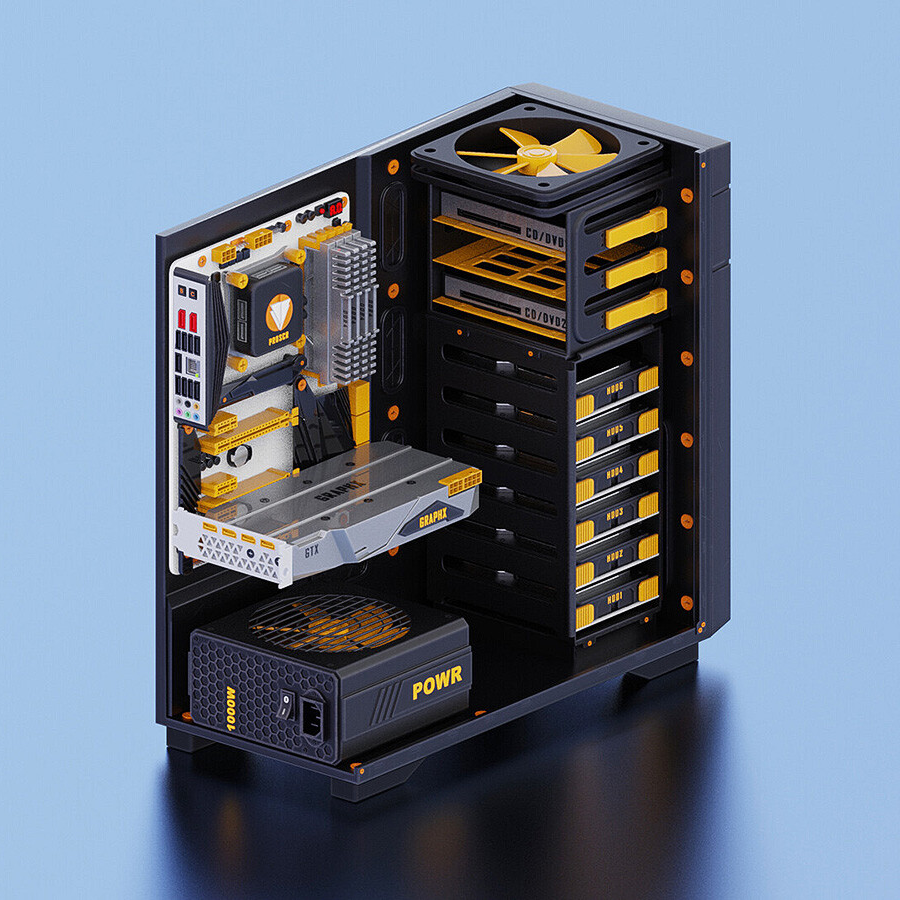

They might mean exclusives, of which none of those apply. But I personally don’t think exclusives are a good thing anyway.


They might mean exclusives, of which none of those apply. But I personally don’t think exclusives are a good thing anyway.


You’re not incorrect, but time has shown that some proportion of society will always act this way. And as much as it feels rational to shit on these people, a large number of people being victimised for their laziness and stupidity has flow on effects to broader society.


SearXNG also supports this with the same syntax, and can call fallback to using DDG bangs with two ‘!’ And you can make your own custom bangs if you’re self-hosting, if you’re technically inclined.

There’s some cheap 2.5gbps managed switches on AliExpress if you’re willing to import. I think that speed for switches is still kind of uncommon so you have relatively few offerings in Western countries.


I suggest using Beetle mednafen, unless you’re on a very slow system. Or Swanstation, it’s not like that’s going away.


I also don’t see Swanstation going away any time soon, even if it gets no new features. It’s pretty close to feature complete in the ways that matter anyway.


I just overuse parantheses instead, as you noted. You know you’re rambling when you have several layers of them, like I’m writing a conversation in Lisp.


Don’t use social media or news sites when you wake up, or before bed
Block notifications from social media and news sites, or uninstall altogether
Set time limits (like with leechblock-ng on desktop, or with simple alarms)
You probably don’t need to read the news every day to be reasonably informed


Most of this is auto-generated header files to be clear. Still, goes to show how many GPU variants they have support for in the kernel, going back 15+ years.


They could, but obviously these people would be against that. Because they don’t have a rational objection, they’re just bigots.


Having a web UI is useful even if you’re not using the extra tools. Not mandatory of course, but nice.


He also won re-election running as an independent, well after the rape charges were known and he was kicked out of his party and suspended from parliament. But that wasn’t enough for the people of his electorate to go: “Err maybe this rapist isn’t the best option to represent us.”


US only I suspect, and likely to be gutted by the Trump administration.


I’m not really an expert, but I’ll try and answer your questions one by one.
Don’t VMs have a virtual GPU with a driver for that GPU in the guest that, I imagine, forwards the graphics instructions and routines to the driver on the host?
Yes, this is what VirGL (OGL) and Venus (Vulkan) do. The latter works pretty well because Vulkan is more low level and better represents the underlying hardware so there is less of a performance overhead. However, this does mean you need to translate all APIs one by one, not just OGL and Vulkan, but also hardware decoding and encoding of videos, and compute, so it’s a fair amount of work.
Native contexts, in contrast, are basically the “real” host driver used in the guest, and they essentially pass through everything 1:1 to the host driver where the actual work is carried out. They aren’t really like virtualisation extensions as the hardware doesn’t need to support it AFAICT, just the drivers on both the host and the guest. There’s a presentation and slides on native contexts vs virgl/venus which may be helpful.
Where in that does Magma come in? My guess is that magma sits in the guest as the graphics driver and on the host before Mesa, but I know little about virtualisation outside of containers.
To be honest, I don’t fully understand the details either, but your interpretation seems more or less correct. From looking at the diagram on the MR it seems that it’s a layer between the userspace graphics driver and the native context (virtgpu) layer on the guest side, which in turn communicates with another Magma layer on the host, and finally passes data to the host GPU driver, which may be Mesa but could also be other drivers as long as they implement Magma.
The broader idea is to abstract implementation details, so applications and userspace drivers don’t need to know the native context implementation details (other than interfacing with Magma). And the native context layer doesn’t need to know which host gpu driver is being used, it just needs to interface with Magma.


I’d probably get the 9070 XT over the 7080 XT, just for full performance FSR4 (there’s some compatibility with it on Linux, but it’s slower). Maybe even the non-XT model for the same reason.
I feel like you might be able to do better price wise on the RAM, although I’m not up to date on current prices for DDR5.
EDIT: I see you have an itx case, so maybe that limits your GPU options a bit.


The sandboxing sometimes breaks applications or requires additional configuration. And I don’t like that it’s a separate thing I need to maintain, although some package managers pair main package updates etc together.
And as a NixOS user, I prefer to use nix to handle as much of my system as possible, although flatpak at least is useful as a fallback in a pinch. Of course, this is a niche within a niche and mainstream users, particularly those using immutable distros can and do benefit from flatpak.


“Globalism” invariably means some sort of conspiracy theory, usually about Jews. Given this party are also anti-vaxxers, that’s the most plausible conclusion.
And a broader coalition among the rest of the Western countries including Europe and Australia/NZ etc makes more sense than duplicating effort in every country.


The other points have been answered, so I’ll try and give a surface view of Magma. It’s basically an abstraction layer for virtual GPU drivers used in VMs. Currently, you need specific implementations to handle all of the pathways between different types of VM guests and hosts, which gets complicated fast, and duplicates a lot of work. The idea is the Magma abstracts this away, and so host and guest GPU drivers only need to interface with Magma. Which means you can swap out different host OSes/GPU drivers and different guest OSes and GPU drivers, and as long as they interface with Magma, they should “just work”.
Of course, whether it will work out that way in practice remains to be seen. I think Google is using it internally but it’s not in Mesa yet, so it may not even roll out widely. You can follow the MR if you want more detail or to see its progress.
If you’re wondering why Google is implementing this it appears to be for Fuschia and Android, and compatibility between those two and with desktop Linux, with Windows support also supported as an additional value add. Chromebooks in particular should benefit from this, since ChromeOS is being retired I believe.
And as an aside, unlike some of the traditional GPU implementations you’d find in VMs, these are or will be pretty much just the normal graphics driver that you’d use on the host. They are generally called “native contexts” and have been implemented for AMD and Intel at the least, but only on non-Windows systems for now. These implementations alone, once they are widely supported, should result in near native GPU performance in VMs, without having to use GPU passthrough (I.e. passing through a physical GPU to the VM guest). So even without Magma there’s some promising stuff happening, albeit mainly on the Linux host -> Linux guest pathway.


And even if they could, it wouldn’t save them, as being “one of the good ones” does nothing to prevent deportation or worse.
I discovered the book after the residents of Springfield went mad trying to win the local lottery, only to discover a chilling tale of conformity gone mad.